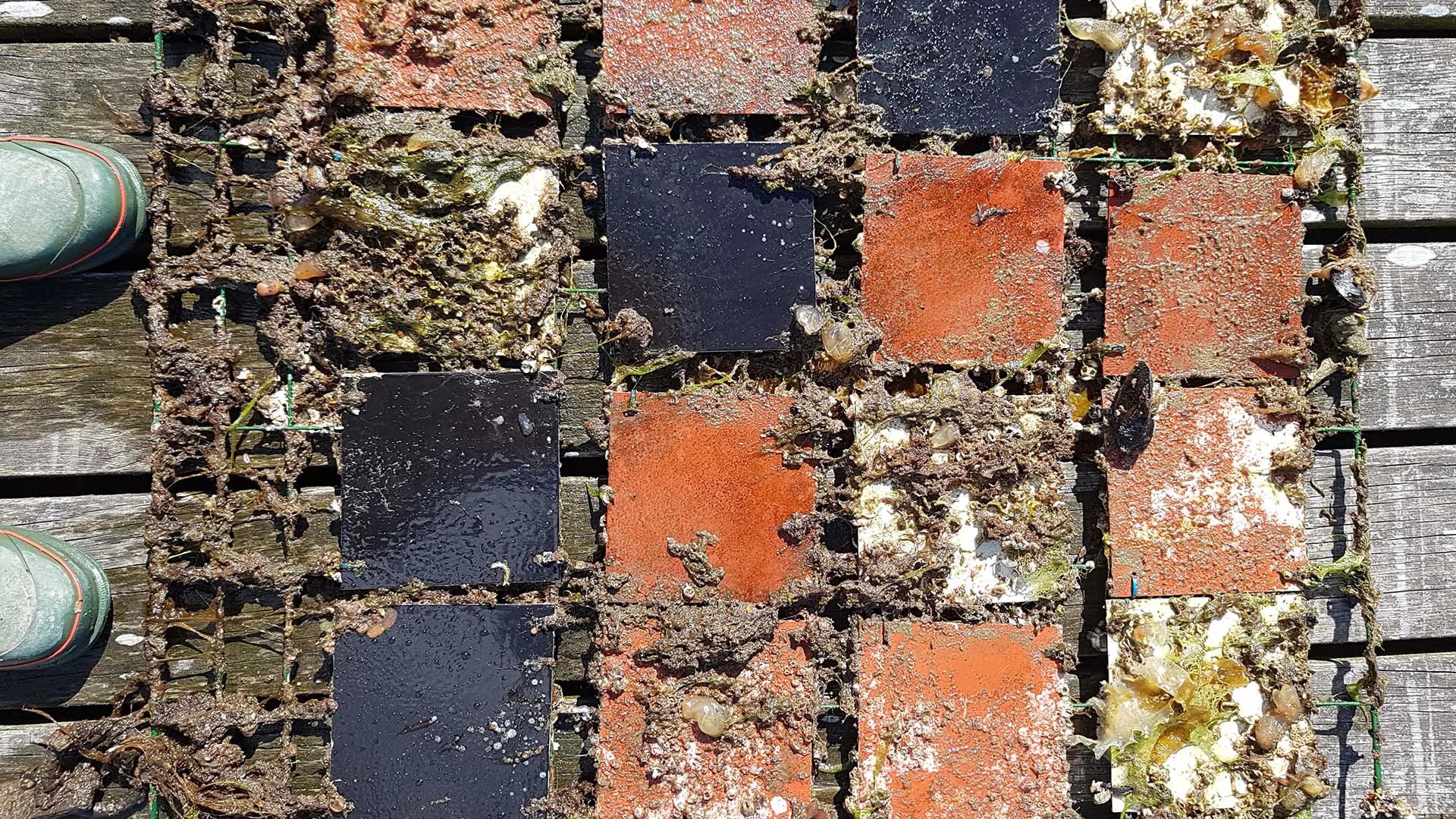
Marine growth (biofouling) on submerged surfaces is a well known problem within marine industries, including both commercial and recreational shipping. At the Department of Mechanics and Maritime Sciences (M2) we conduct research both on biofouling and antifouling strategies.
An untreated surface submerged in the marine environment will quickly get colonized by a multitude of different organisms. This marine growth on man-made surfaces is considered a significant problem for the maritime sector (including commercial and recreational boating), leading to increased costs for fuel consumption and maintenance. Biofouling also increases the risk of invasive species transfer which can create large environmental and societal costs.
To prevent/inhibit marine growth on vessel hulls , antifouling coatings that contain and release different type of toxins (biocides) to the marine environment are typically employed. It is important to ensure that they do not have negative impact on the marine life. There are alternatives to biocide-containing antifouling coatings like foul-release and hard (epoxy) coatings, the latter requiring to be combined with regular in-water cleaning of the hull.
Researchers at the Department of Mechanics and Maritime sciences work with marine growth and antifouling strategies within tre focus areas: Marine growth and antifouling strategies, Environmental effects from antifouling products and invasive biofouling species with shipping as vector.
Marine growth and antifouling strategies
Within this focus area, we conduct research to:
- Map the biofouling pressure and species present within European waters (the Baltic Sea, North Atlantic and the Mediterranean).
- Analyse the impact of biofouling on ship hull friction and fuel consumption Determine the necessary release of biocides required to inhibit marine growth.
- Understand how marine growth can be removed efficiently from ship hulls to enable sustainable hull cleaning methods.
- Make decision support tools for antifouling and hull maintenance strategies available for shipping industry and environmental agencies.
Environmental effects from antifouling products
Within this research area, we work with chemical pollution from antifouling coatings for ships and leisure boats by:
- Developing methods based on X-Ray Fluorescence (XRF) to detect and quantify biocides on vessel hulls as well as to determine environmental release rates of biocides and metals.
- Improving the environmental risk assessment of both existing and novel antifouling coatings.
- Performing load compilations of biocides to the marine environment, predict environmental effects and costs and provide decision support for national and European authorities.
Invasive biofouling-species with shipping as vector
Within this area we work with biological pollution (invasive species) from shipping and its mitigation.
- Map the ship traffic to Swedish ports to identify high risk shipping routes and ports for transfer of non-indigenous and invasive species.
- Investigate efficacy of today’s measures against non-indigenous and invasive species with focus on ships’ so called niche areas (e.g. sea chests).
Staff members within the research area

- Senior Researcher, Maritime Studies, Mechanics and Maritime Sciences

- Associate Professor, Maritime Studies, Mechanics and Maritime Sciences

- Researcher, Maritime Studies, Mechanics and Maritime Sciences
- Postdoc, Maritime Studies, Mechanics and Maritime Sciences

- Postdoc, Maritime Studies, Mechanics and Maritime Sciences
- Doctoral Student, Maritime Studies, Mechanics and Maritime Sciences